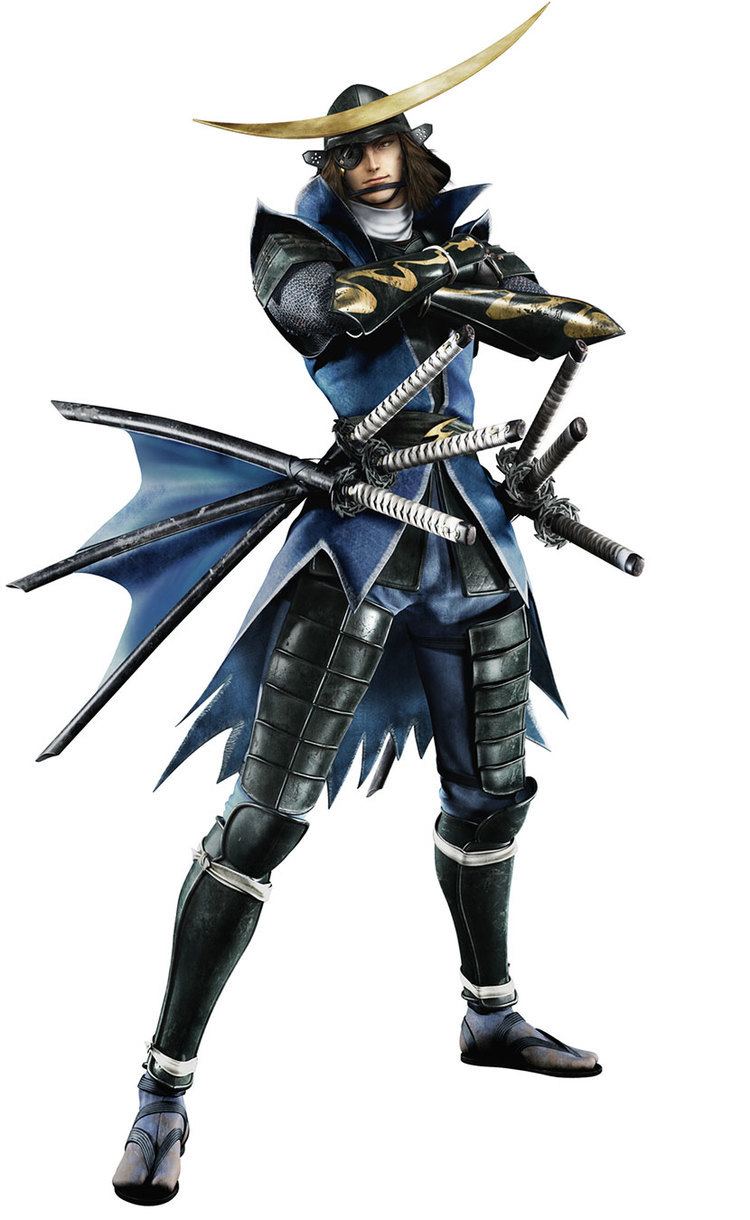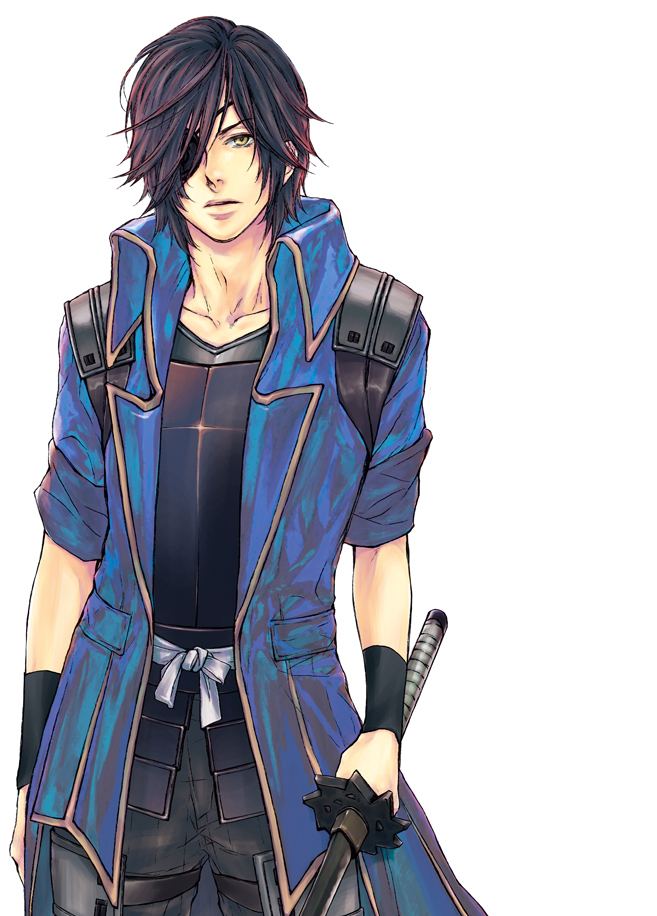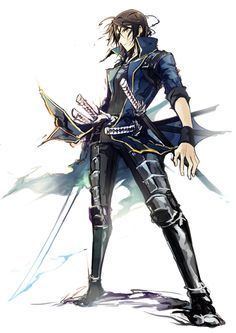Parents Date Terumune, Yoshihime Died June 27, 1636 | Role Political leader Name Date Masamune | |
 | ||
Children Date Hidemune, Irohahime, Date Tadamune Siblings Masamichi Date, Hideo Date, Senshihime Similar People | ||
Ishida mitsunari vs date masamune part 1
Date Masamune (伊達 政宗, September 5, 1567 – June 27, 1636) was a regional strongman of Japan's Azuchi–Momoyama period through early Edo period. Heir to a long line of powerful daimyōs in the Tōhoku region, he went on to found the modern-day city of Sendai. An outstanding tactician, he was made all the more iconic for his missing eye, and Date was often called dokuganryū (独眼竜), or the "One-Eyed Dragon of Ōshu.".
Contents
- Ishida mitsunari vs date masamune part 1
- History of Date Masamune Beginnings Part 1
- Early life
- Military campaign
- Service under Hideyoshi
- Patron of culture and Christianity
- Family
- In popular culture
- References

As a legendary warrior and leader, Masamune is a character in a number of Japanese period dramas. He was played by Ken Watanabe in the popular 1987 NHK series Dokuganryū Masamune.

History of Date Masamune, Beginnings (Part 1)
Early life

Date Masamune was the eldest son of Date Terumune, born in Yonezawa Castle (in modern Yamagata Prefecture). At the age of 14 in 1581 Masamune led his first campaign, helping his father fight the Sōma family. In 1584, at the age of 17, Masamune succeeded his father, Terumune, who chose to retire from his position as daimyō. Masamune's army was recognized by its black armor and golden headgear being known as the One-Eyed Dragon of Ōshu.
Military campaign

Masamune is known for a few things that made him stand out from other daimyōs of the time. In particular, his famous crescent-moon-bearing helmet won him a fearsome reputation. As a child, smallpox robbed him of sight in his right eye, though it is unclear exactly how he lost the organ entirely. Various theories behind the eye's condition exist. Some sources say he plucked out the eye himself when a senior member of the clan pointed out that an enemy could grab it in a fight. Others say that he had his trusted retainer Katakura Kojūrō gouge out the eye for him,making him,The One-Eyed Dragon of Ōshu.

The Date clan had built alliances with neighboring clans through marriages over previous generations, but local disputes remained commonplace. Shortly after Masamune's succession in 1584, a Date retainer named Ōuchi Sadatsuna defected to the Ashina clan of the Aizu region. Masamune declared war on Ōuchi and the Ashina for this betrayal, and started a campaign to hunt down Sadatsuna. Formerly amicable alliances were cast aside as he began to attack and conquer the lands of Sadatsuna's allies in pursuit, even those of his kin in Mutsu and Dewa Provinces. In the winter of 1585, one of these allies, Hatakeyama Yoshitsugu, felt defeat was approaching and chose to surrender to the Date instead. Masamune agreed to accept the surrender, but on the heavy condition that the Hatakeyama give up most of their territory to the Date. This resulted in Yoshitsugu kidnapping Masamune's father Terumune during their meeting in Miyamori Castle, where Terumune was staying at during the time. The incident ended with both Yoshitsugu and Terumune killed as the fleeing Hatakeyama party clashed with the pursuing Date troops near the Abukuma River. Various records of the event exist, although they present different accounts of its circumstances.
The Date fought many battles with their neighbours afterwards, including the Battle of Hitotoribashi in 1585. After defeating the Ashina at the Battle of Suriagehara in 1589, Masamune made the Aizu domain his base of operations.
Service under Hideyoshi
In 1590, Toyotomi Hideyoshi seized Odawara Castle and compelled the Tōhoku-region daimyōs to participate in the campaign. Although Masamune refused Hideyoshi's demands at first, he had no real choice in the matter since Hideyoshi was the virtual ruler of Japan. Masamune still delayed, infuriating Hideyoshi. Expecting to be executed, Masamune, wearing his finest clothes and showing no fear, faced his angry overlord. Not wanting further trouble, Hideyoshi spared his life, saying that "He could be of some use".
After serving Hideyoshi for a time, he was given Iwatesawa and the surrounding lands as his home domain. Masamune moved there in 1591, rebuilt the castle, renamed it Iwadeyama, and encouraged the growth of a town at its base. Masamune stayed at Iwadeyama for 13 years and turned the region into a major political and economic center. He and his men served with distinction in the Korean invasions under Hideyoshi and, after Hideyoshi's death, he began to support Tokugawa Ieyasu — apparently at the advice of Katakura Kojūrō.
Tokugawa Ieyasu awarded Masamune the lordship of the huge and profitable Sendai Domain, which made Masamune one of Japan's most powerful daimyōs. Tokugawa had promised Masamune a one-million koku domain, but, even after substantial improvements were made, the land only produced 640,000 koku, most of which was used to feed the Edo region. In 1604, Masamune, accompanied by 52,000 vassals and their families, moved to what was then the small fishing village of Sendai. He left his fourth son, Date Muneyasu, to rule Iwadeyama. Masamune would turn Sendai into a large and prosperous city.
Although Masamune was a patron of the arts and sympathized with foreign causes, he was also an aggressive and ambitious daimyō. When he first took over the Date clan, he suffered a few major defeats from powerful and influential clans such as the Ashina. These defeats were arguably caused by recklessness on Masamune's part.
Being a major power in northern Japan, Masamune was naturally viewed with suspicion, as any potential rival would be viewed. Toyotomi Hideyoshi reduced the size of his land holdings after his tardiness in coming to the Siege of Odawara against Hōjō Ujimasa. Later in his life, Tokugawa Ieyasu increased the size of his lands again, but was constantly suspicious of Masamune and his policies.
Although Tokugawa Ieyasu and other Date allies were always suspicious of him, Date Masamune for the most part served the Tokugawa and Toyotomi loyally. He took part in Hideyoshi's campaigns in Korea, and in the Osaka campaigns. When Tokugawa Ieyasu was on his deathbed, Masamune visited him and read him a piece of Zen poetry. Masamune was highly respected for his ethics; a still-quoted aphorism is, "Rectitude carried to excess hardens into stiffness; benevolence indulged beyond measure sinks into weakness."
Patron of culture and Christianity
Masamune expanded trade in the otherwise remote, backwater Tōhoku region. Although initially faced with attacks by hostile clans, he managed to overcome them after a few defeats and eventually ruled one of the largest fiefdoms of the later Tokugawa shogunate. He built many palaces and worked on many projects to beautify the region. He is also known to have encouraged foreigners to come to his land. Even though he funded and promoted an envoy to establish relations with the Pope in Rome, he was likely motivated at least in part by a desire for foreign technology, similar to that of other lords, such as Oda Nobunaga. Further, once Tokugawa Ieyasu outlawed Christianity, Masamune reversed his position, and though disliking it, let Ieyasu persecute Christians in his domain. For 270 years, Tōhoku remained a place of tourism, trade and prosperity. Matsushima, for instance, a series of tiny islands, was praised for its beauty and serenity by the wandering haiku poet Matsuo Bashō.
He showed sympathy for Christian missionaries and traders in Japan. In addition to allowing them to come and preach in his province, he also released the prisoner and missionary Padre Sotelo from the hands of Tokugawa Ieyasu. Date Masamune allowed Sotelo as well as other missionaries to practice their religion and win converts in Tōhoku.
Masamune's greatest achievement was funding and backing one of Japan's few journeys of far-flung diplomacy and exploration in this period. He ordered the building of the exploration ship Date Maru or San Juan Bautista, using foreign (European) ship-building techniques. He sent one of his retainers, Hasekura Tsunenaga, Sotelo, and an embassy numbering 180 on a successful voyage to establish relations with the Pope in Rome. This expedition visited such places as the Philippines, Mexico, Spain and Rome, making it the first Japanese voyage to sail around the world. Previously, Japanese lords had never funded this sort of venture, so it was probably the first successful voyage. At least five members of the expedition stayed in Coria (Seville) of Spain to avoid the persecution of Christians in Japan. 600 of their descendants, with the surname Japón (Japan), are now living in Spain.
When the Tokugawa government banned Christianity, Masamune had to obey the law. However, some sources suggest that Masamune's eldest daughter, Irohahime, was a Christian.
Family
In popular culture
Professional wrestling promotion Osaka Pro Wrestling featured two wrestlers using the ring names Masamune and Hideyoshi, who together form the tag team "Sengoku". In the Video game series "Samurai Warriors" (Ps2) Masamune Date is featured as a playable character. In his first appearance he was a very young man and fought with dual wooden swords, later, his appearance was changed to be a bit older and his weapons were switched out for a more European style sword and a pair of pistols. He has appeared in every major Samurai warriors title as well as some others . Date Masamune also has a playable route in the social Otome game, Samurai Love Ballad: PARTY by Voltage Inc, where he is portrayed as a dark-green haired man with an eyepatch. However in the game, the reason for his eyepatch was revealed to be because of a genetic miscoloration of his right eye making it blue, whereas his visible left eye is green. The game uses this as a plot device, such that his mother, Lady Yoshihime, was made to hate him for being the spawn of the demon, a belief she holds due to his eye miscoloration.
